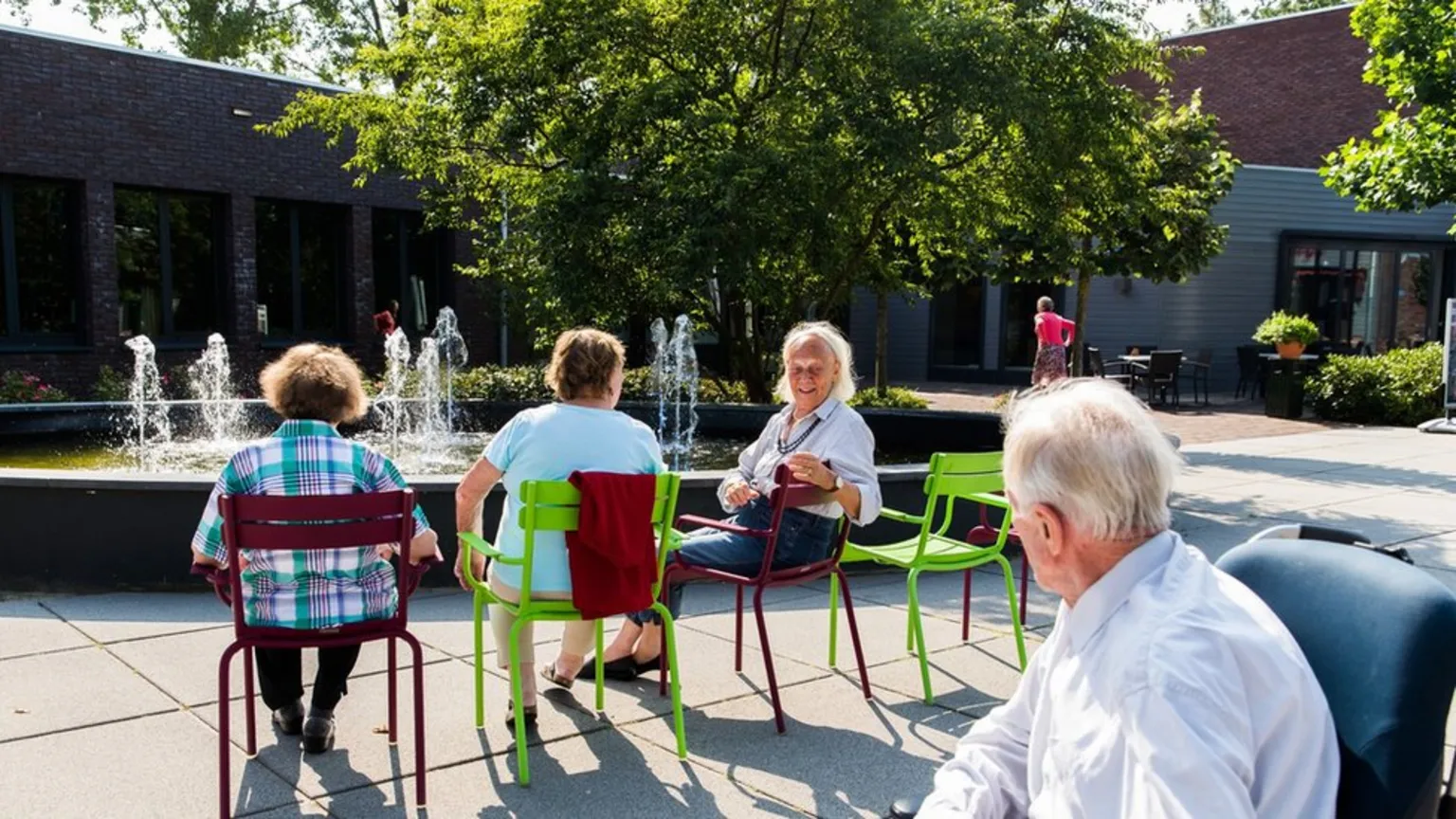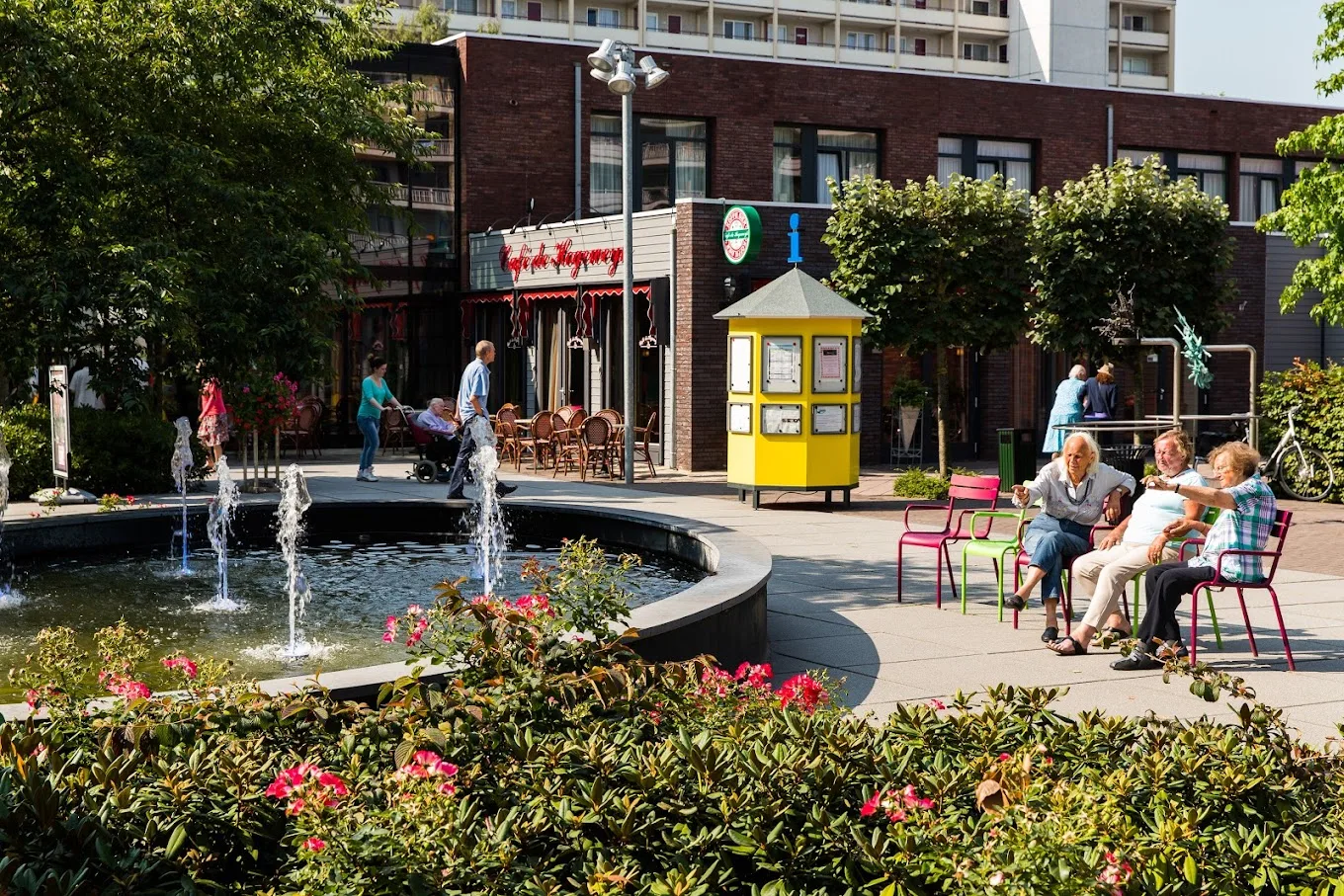(Featured Photo Courtesy of Be Advice via www.bethecareconcept.com)
At The Hogeweyk®, you’ll find normal life settings for individuals living and coping with severe dementia. The goal is to humanize the caregiving experience while providing inclusive opportunities within what feels like any other neighborhood out there.
Planning for this concept started over 30 years ago, but its doors didn’t open until 2009. People staying at The Hogeweyk can visit the location’s restaurant or pub, enjoy a show at the theater, or shop for groceries at the market. Neighbors are specifically chosen based on similar lifestyles to encourage relationships.

Some houses are designed to accommodate people with introverted personalities. Even then, you can find social clubs, bingo nights, and plenty of chances to bump into someone and have a conversation. In return, the levels of boredom and loneliness are significantly reduced. That means hopelessness can be replaced with hope!
At the time, it was the first facility of its kind. The successes experienced at The Hogeweyk have inspired similar projects throughout the world.
The Focus Is on Possibilities Instead of Disabilities
What sets The Hogeweyk apart from traditional nursing homes is its emphasis on normalcy and autonomy. That allows the focus to stay on the possibilities of what comes today, tomorrow, and beyond instead of their limitations.
The concept was developed by Yvonne van Amerongen and her colleagues, who worked at a traditional nursing home in the Netherlands. They recognized the limitations and often dehumanizing aspects of conventional care settings for dementia patients. In these traditional settings, patients often experience confusion, stress, and a diminished quality of life due to the unfamiliar and clinical environment.
People at this facility are not confined to their homes or a small room. They roam freely throughout the streets within the village, helping to maintain their independence and skills. “We said to each other, ‘What do we want for ourselves and our moms and dads?’” said Facility Manager Eloy van Hal in a 2017 interview.

The caregivers at The Hogeweyk dress in plain clothes to help facilitate this atmosphere. You’ll see them performing roles, like being a cashier at the store or living as a neighbor. These efforts help the experience feel like normal life instead of being confined to a sterile care facility.
It is a dignified, meaningful, and enjoyable life. The successes seen here show how innovative environmental designs and a person-first care philosophy can significantly improve the quality of life for anyone diagnosed with severe dementia.
“For us, it is important to support them to experience a normal day,” van Hal said. “A day they like, and a day they recognize.”
Why Lessening Anxiety Is So Important for Individuals with Dementia
Anxiety can significantly diminish the quality of life for people with dementia. Reducing it allows each person to feel more comfortable and secure, increasing levels of happiness while improving well-being.
Anxiety can exacerbate behavioral symptoms associated with dementia, such as agitation, aggression, wandering, and sleep disturbances. By reducing triggers, these reactions are often lessened, making daily life more manageable for both the individual and their caregivers.
A calmer, more relaxed state is also known to help maintain their cognitive abilities for as long as possible.

It is easier on the caregiver as well. By removing the institutionalized environment, people are more likely to be treated as equals. That leads to a more peaceful daily routine without the typical strain placed on employees as they try to help.
“All the residents living here need medical treatment, yes,” said van Hal. “They all have medication. But they are first a person! That’s why there are people living here with dementia, and not demented people.”
The Hogeweyk Uses an In-House Currency
Residents at The Hogeweyk can use real money if that is their preference. Only a small percentage of the patients have enough lucidity to manage currency, and those purchases are usually for things like candy bars or toothpaste.
As part of the facility’s processes, in-house currency is sent to all the homes. It’s up to each house to budget what they receive for the month, with the help of the caregivers, of course.
Roughly 50 million people currently have a diagnosis on the dementia spectrum. At The Hogeweyk, that means they see 50 million different stages of how the disease is advancing. It’s up to the caretakers to treat each person accordingly, even if they slip up with dates or names. There is no requirement to bring people to reality or let them live in a “bubble.”
It’s all about maintaining the individuality of choice. “If we know that you have sugar in your coffee each day, we’ll still ask if you want it,” said van Hal. “Deciding what you put in your coffee is important.”
The results speak for themselves. The benefits this approach delivers are measured in years for those who come to live at The Hogeweyk. Those are hundreds of days where everyone can feel a little closer to each other.












